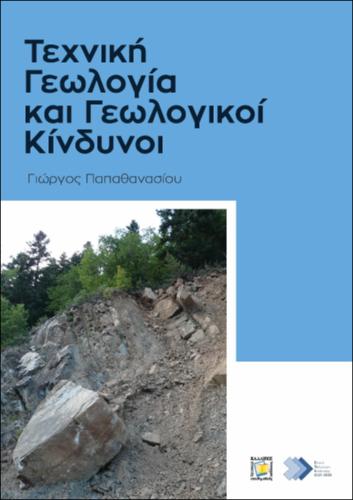| Title Details: | |
|
Engineering Geology and Geohazards |
|
| Authors: |
Papathanassiou, George |
| Subject: | NATURAL SCIENCES AND AGRICULTURAL SCIENCES > EARTH SCIENCES > ENGINEERING GEOLOGY NATURAL SCIENCES AND AGRICULTURAL SCIENCES > EARTH SCIENCES > ENGINEERING GEOLOGY > ROCK MECHANICS NATURAL SCIENCES AND AGRICULTURAL SCIENCES > EARTH SCIENCES > ENGINEERING GEOLOGY > SOIL MECHANICS NATURAL SCIENCES AND AGRICULTURAL SCIENCES > EARTH SCIENCES > ENGINEERING GEOLOGY > GEOTECHNICS NATURAL SCIENCES AND AGRICULTURAL SCIENCES > EARTH SCIENCES > ΤECTONIC GEOLOGY > EARTHQUAKE GEOLOGY NATURAL SCIENCES AND AGRICULTURAL SCIENCES > EARTH SCIENCES > GENERAL GEOLOGY > REMOTE SENSING GEOLOGY |
| Keywords: |
Soil Mechanics
Landslides Rockfalls Geohazards Hazard Susceptibility Soil Liquefaction Tunnels Dams Rockmass |
| Description: | |
| Abstract: |
The goal of this textbook is to present the basic topics of Engineering Geology which will be called upon to deal with both geologists and engineers. The structure of the book is divided into two parts, where in the first the physical and mechanical characteristics of both soil and rock formations are thoroughly presented and extensive reference is made to the rock mass classifications. In the second part of the book, reference is made to geological phenomena, which when they threaten the man-made environment are classified as hazards. An extensive presentation is made to the hazard evaluation process of these phenomena such as the methodology regarding the compilation of inventory maps and the assessment of their susceptibility. The phenomena of landslides, rockfalls and seismically induced failures such as seismic landslides and liquefaction are then analyzed in separate thematic sections. It was considered appropriate to distinguish the failures caused by seismic loads and to analyze them as a separate thematic unit because Greece is characterized by intense seismic activity with serious consequences for the natural and man-made environment. The triggering mechanism of these phenomena is analyzed and the most recently developed methodologies for evaluating the probability of occurrence are presented. The last section of the book refers to the use of remote sensing technologies in Engineering Geology. The application of these technologies, by geologists, is strongly recommended for the reliable and accurate mapping of likely to failure areas.
|
| Linguistic Editors: |
Serafeimidou, Athena |
| Graphic Editors: |
Moustani, Evangelia |
| Type: |
Undergraduate textbook |
| Creation Date: | 22-09-2022 |
| Item Details: | |
| ISBN |
978-618-5667-64-1 |
| License: |
Attribution - NonCommercial - ShareAlike 4.0 International (CC BY-NC-SA 4.0) |
| DOI | http://dx.doi.org/10.57713/kallipos-96 |
| Handle | http://hdl.handle.net/11419/8584 |
| Bibliographic Reference: | Papathanassiou, G. (2022). Engineering Geology and Geohazards [Undergraduate textbook]. Kallipos, Open Academic Editions. https://dx.doi.org/10.57713/kallipos-96 |
| Language: |
Greek |
| Consists of: |
1. Soil mechanics 2. Rock mechanics 3. Rock mass classification 4. Tunnels 5. Dams 6. Natural – Geological hazards 7. Landslides 8. Rock slope engineering 9. Earthquake Engineering Geology 10. Susceptibility and Hazard of geological phenomena 11. Remote sensing applications in Engineering Geology |
| Number of pages |
380 |
| Publication Origin: |
Kallipos, Open Academic Editions |
| You can also view | |
| User comments | |
There are no published comments available! | |

